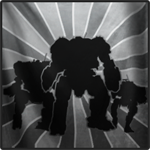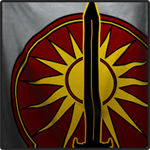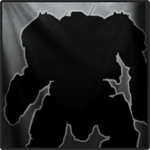Mission Accomplished : http://mwomercs.com/...march-road-map/
---> The info on game mechanics that i'm using is very old, so this whole thread might be incorrect <---
Source for current game mechanics: http://mwomercs.com/...ement-behavior/
Alright, so now everyone is aware of the changes in PTS4 that are going to go live early December.
The changes mostly include reductions to mech skill tree boosts to a mech's agility such as turn rate, acceleration and deceleration, etc.
One of the things that is going to be indirectly affected by these changes is how hill climb mechanic currently affects mechs in the game. The large number of clutter and small details on the ground with collision meshes slow down larger mechs to a nearly halt speed. With the agility nerfs, assaults (which were already hit by the nerfs) will have an even harder time recovering from those halts.
The current system only works by measuring the slope of the terrain mesh at every given time.
As an example, comparison between a locust and a direwolf in the current hill climb mechanics is shown here:

As you can see, the mechs speed reduction is affected by the terrain slope the mech is walking on. Lots of small and tiny clutter with collision boxes on maps can cause alot of sharp slopes, which combined with the usual rubber-banding in the game can cause a situation like this:


The problem here is that the system assumes the mech to be a rigid box, over-simplifying this mechanic, disregarding the mech stride length and height!, Hitting assault mechs hard in the movement department (assaults are already slow and clumsy... because they are assaults).
a 100 ton mech should be able to step over anything smaller than a small building:

Suggestion:
in order to take the stride length and height into account, one can define a stride boundary limit for each mech, which defines an allowable area a mech can step on things. if the terrain collision box crosses this boundary, then you can apply the current mechanic in order to calculate speed reduction, and possibly halt.
However, if the terrain collision meshes all reside in the boundary, then there should not be any speed reduction in any situation as demonstrated below:

Some examples:



Obviously, a dire wolf should have higher stride boundary than that of the locust, because of its size... so it should be able to clear out most of the obstacles!
Also, an atlas should have the largest boundary between the 100 ton mechs.. because its a humanoid.
Note that the locust in the above picture will halt to a full stop on the 80 degree slope, while the dire does not even see it.
Meanwhile, an atlas as a humanoid plantigrade should be able to step over all!
I like to hear you opinion regarding this suggestion!
I say again, the current mechanics may be different from what i assumed... so please correct me if i'm wrong!
Edited by Navid A1, 09 March 2016 - 06:17 PM.







































